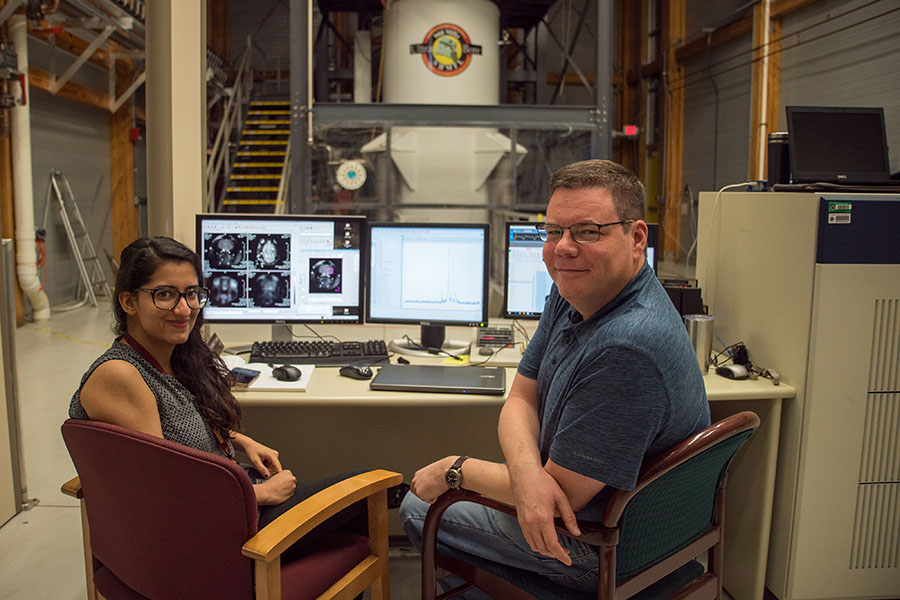
With a new grant from the National Institutes of Health, researchers at the Florida State University-headquartered National High Magnetic Field Laboratory will study the main mechanism behind one of the top causes of disability: migraines.
The $3.3 million, five-year grant continues a collaboration that includes Sam Grant, a MagLab researcher and associate professor in the FAMU-FSU College of Engineering. Grant is partnering with Dr. Michael Harrington, director of neurosciences at Huntington Medical Research Institute (HMRI) in Pasadena, California, and Linda Petzold, a professor of computer science and mechanical engineering at the University of California, Santa Barbara (UCSB).
Using the MagLab’s world-record MRI machine, the team has been working for years to shed light on why migraines occur and how they propagate to different brain areas, which is still not well understood.
However, the researchers have identified a likely suspect — sodium — and have been building a case for the role it plays in these painful episodes. In research published earlier this year, for example, they described how sodium distribution in the brain is disturbed in mammals even before symptoms of an oncoming migraine begin. They also described how those sodium increases can be blocked.
“If we can discover a way to treat it by correcting these sodium-led changes, it offers a lot of hope,” said Nastaren Abad, a co-author of the paper and a doctoral student in biomedical engineering at FSU who will be part of the new project.
Different stimuli can trigger migraines, depending on the patient. But no matter what origins, the team believes the process may unfold in the same way. Specifically, their research points to a sodium imbalance that begins in an area of the brain called the choroid plexus and is spread via the cerebrospinal fluid.
The NIH grant will allow the team to better understand what happens along that pathway and in turn develop more effective strategies to treat migraines.
Interrupting this pathway could prevent or mitigate migraines, Grant said. The team plans to test sodium pump blockers, which have been effective in previous studies, and compare their performance to both common and experimental migraine drugs.
Each institution is contributing in a unique way, according to Grant. The HMRI team is conducting behavioral and tissue studies using animal models; the UCSB group is developing computer models of sodium transport in the brain; and at the MagLab, Grant’s team is running high-field sodium magnetic resonance imaging (MRI) and metabolic spectroscopy experiments.
By combining these methods, they hope to fully understand how migraines become ingrained through sodium.
Sodium imaging is a novel technique developed with the MagLab 21.1-tesla MRI system. Conventional MRIs with magnetic fields of 2 or 3 teslas, like those used routinely in hospitals, detect the hydrogen in the water in the body and use that data to create images of tumors and other structures. But a sodium MRI targets less sensitive sodium atoms, which are critical to many biological processes and require much stronger magnetic fields to detect.
“The 21.1-T magnet is an ideal system for this effort because it allows us to probe the time evolution of migraines from before onset to initiation of trigger through to migraine pain,” Grant said. “Dr. Harrington, the champion of this effort, has pursued such information for years and came to the MagLab years ago with the hope of finally obtaining it. We’ve been thrilled to bring our techniques and expertise to bear on this debilitating disorder.”
The impact of the team’s research could be significant. About 12 percent of Americans experience migraines, according to the NIH. In addition, the treatments being explored by the team could benefit patients dealing with mood conditions and other disorders that may involve the same pathways, Grant said.




